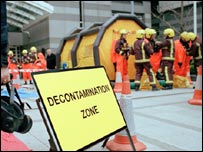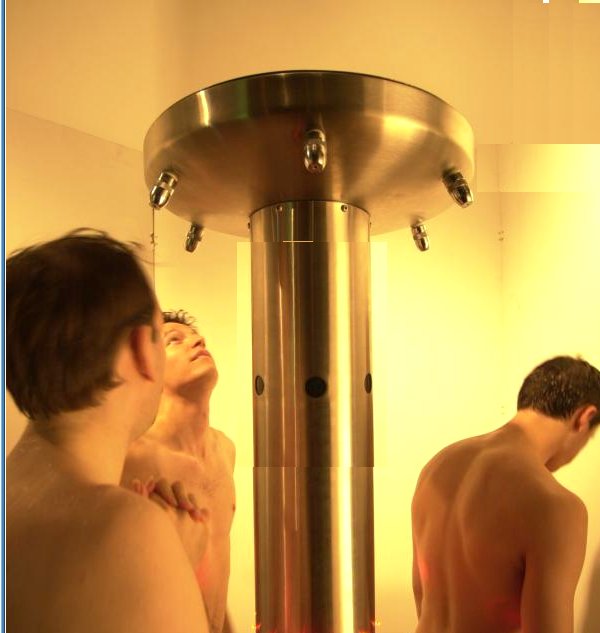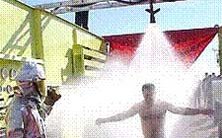


If there Was Another Antrax Threat…
People Would Rather Die Than Strip During A Bio-Terror Attack
Stripping off clothes is an effective first response in a bio or chemical terror attack, but some people would rather be dead than be naked in public.
Add public nudity
to the list of nightmare scenarios associated with terrorist attacks. A new report by a disaster-planning expert confirms what others have said: In the event of many biological or chemical attacks, removal of victims' clothing is one of the most important and effective means of decontamination.
You hold them, you strip them and you wash them,
said Henry Siegelson, report author and clinical assistant professor of emergency medicine at Emory University in Atlanta.
But the reluctance of modest victims to strip naked in front of co-workers or strangers has been one of the issues that has prevented us from moving forward and developing a scheme to manage mass casualties,
he added. Some people would rather be dead than strip in public.
The situation already has occurred several times. On Christmas Eve 1998, an anthrax threat forced more than 200 shoppers and employees at a Mervyn's store in Palm Desert, Calif., to disrobe and be hosed down in a makeshift tent in the parking lot.
We tried to give people as much privacy as possible,
said Wayde York, emergency services coordinator for the Riverside County Fire Department.
Another anthrax decontamination in October, 2001 left 24 employees of the Fifth Third Bank of Naples, Fla., wet and clad only in plastic tarps.
Our people had no clothes,
said Colleen Kvetko, bank president. Marketing director Michelle Balon said she finally ran to a nearby store to purchase shorts, T-shirts, anything we could get our hands on.
Both turned out to be false alarms.
But those strip and hose down
decontamination procedures are necessary, said Siegelson, who helped create the Section of Disaster Medicine for the American College of Emergency Physicians. The mere removal of clothing removes the vast majority of the contaminant, then the victims can safely enter a bus or ambulance or car for transportation to a hospital,
Siegelson said. If clothes are left on, hazardous vapors from chemical or biological agents endanger emergency workers on the site and at medical facilities, he added.
Siegelson has teamed up with an Indianapolis company that developed one solution it calls the Doff-It Personal Privacy Kit. The oversized gown enables victims to disrobe while covered; a large bag is for their contaminated clothes, a small bag for personal articles. The firm, HAZ/MAT DQE, is selling thousands of kits each month,
said Howard Levitin, president. We just sold a lot to Japan for the World Cup Soccer match.
The DQE stands for decontamination, quick and easy,
Levitin added. Modesty about public nudity has emergency responders rethinking procedures. York said Riverside County now has portable showering facilities with a private changing area. And we are not doing mass decontamination without more evidence,
he said.
But Judi Ditzler said she's just kind of floored
that this nudity would be a problem. It's terribly sad if that's the situation, that people would rather die than be seen without their clothes on,
said Ditzler, editor of Nude and Natural, the magazine of the Naturist Society in Oshkosh, Wis. She expressed disappointment that the personal privacy kit would be necessary. Instead of trying to teach people it's OK to be nude in front of others, that it's going to save your life, instead of making that reasonable statement, we create this product to allay that fear,
she said. From a naturist's perspective, we just think that's silly.
The Naturist Society is a 27,000-member nudist organization founded in 1980.
A naturist herself, Ditzler had this advice for anyone facing a naked decontamination: Remain calm, although that's obviously a hard thing to do. Take a deep breath. And realize this is not the end of the world.